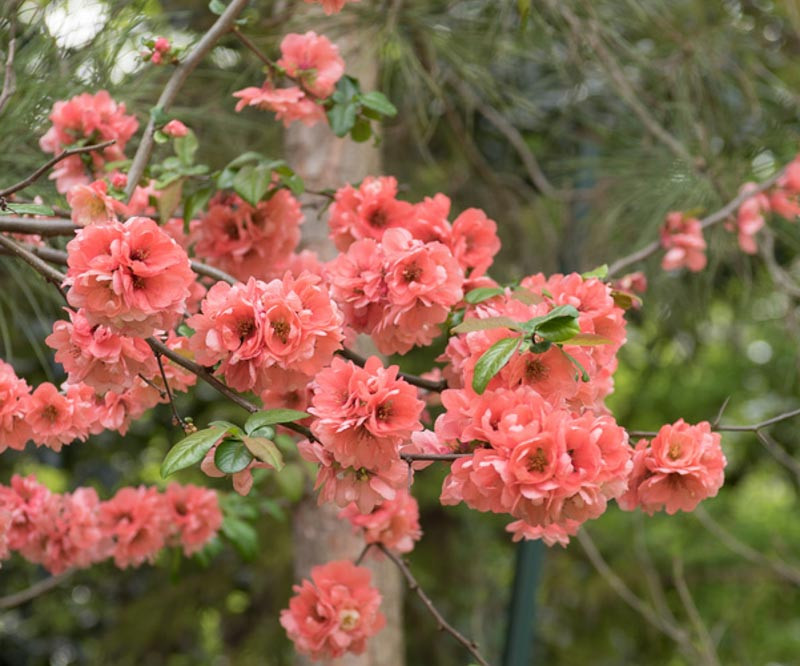Japanese Quince
The Japanese Quince, scientifically known as Chaenomeles speciosa, is a much-admired deciduous shrub known for its charming display of bright, engaging flowers and versatile gardening uses.
Habit: This species exhibits a dense, spreading habit, often forming a thicket of spiny branches that can create an impenetrable hedge. The shrub typically grows to about 6 to 10 feet (180-300 cm) in height and spread, presenting a lush display of glossy, dark green leaves which take on yellow hues in autumn.
Hardiness: Chaenomeles speciosa is a robust plant, exhibiting a remarkable adaptability to a variety of climates. It’s hardy in USDA zones 4 through 9, proving itself capable of withstanding cold temperatures and frost. The plant is not particularly fussy about soil conditions, but it thrives best in well-draining, fertile ground and enjoys a position in full sun to partial shade.
Flowers and Bloom Time: The real show begins in early spring when the Japanese Quince comes alive with a profusion of flowers, even before its leaves fully emerge. The blooms range in color from white to a vivid red-orange, providing a striking contrast against the starkness of winter. The flowering period can last several weeks, offering an early source of nectar for bees and other pollinators.
Uses: Apart from its ornamental value, Chaenomeles speciosa has practical uses. The fruit, although not typically eaten fresh due to its tartness, is perfect for making jellies, preserves, and liqueurs, thanks to its high pectin content. The thorny branches make it an excellent choice for security hedging.
Benefits: The plant’s low-maintenance nature is a significant benefit, demanding minimal attention once established. Its dense thicket provides shelter for wildlife, while its flowers attract pollinators, supporting local biodiversity. Moreover, the Japanese Quince’s tolerance to pruning allows it to fit into formal or wild garden designs alike, adding both aesthetic charm and ecological value.

